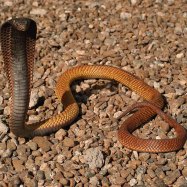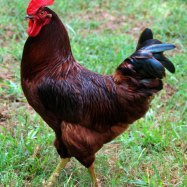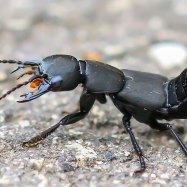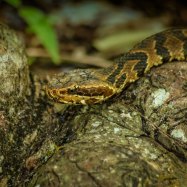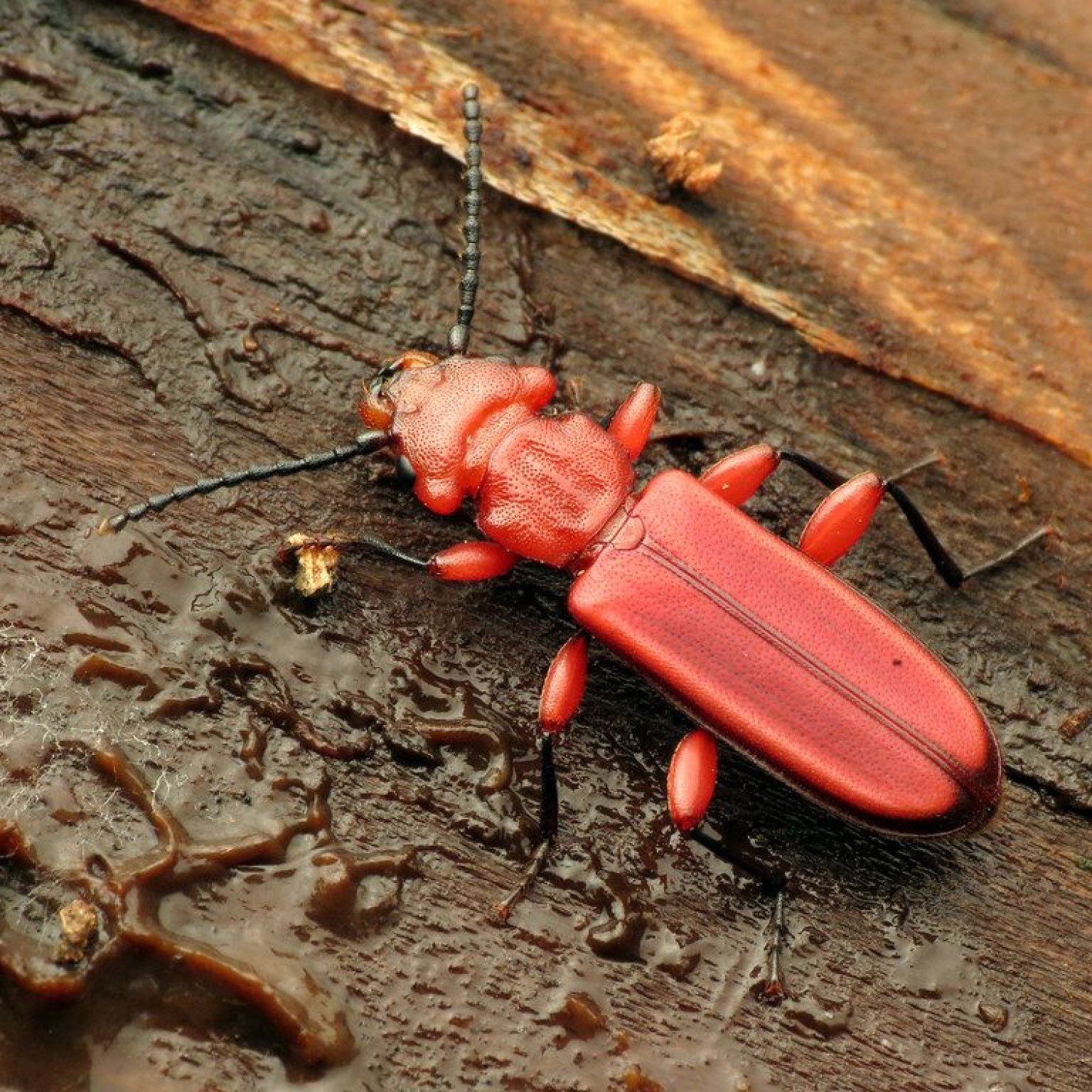
Bark Beetle
1-8 millimeters
Bark beetles, small cylindrical insects, can grow as small as 1 millimeter or as large as 8 millimeters. They are found on the bark of trees, belonging to the Curculionidae family. These beetles may seem small, but they can cause significant damage to trees by digging tunnels under the bark. To protect our trees, it's important to keep an eye out for these tiny yet destructive creatures. #barkbeetles #trees #insects #curculionidae
Animal Details Summary:
Common Name: Bark Beetle
Kingdom: Animalia
Habitat: Forests and woodlands
The Fascinating World of Bark Beetles
Bark Beetle: The Name, The Kingdom, and The OrderWhen you see a bark beetle, you might think it is just like any other beetle you have come across in your garden or a forest. However, these seemingly ordinary creatures have a lot more to offer than meets the eye. Scientifically known as Scolytinae, they are commonly referred to as bark beetles due to their habit of living under the bark of trees. They belong to the kingdom Animalia and the class Insecta Bark Beetle. Within the class, they fall under the order Coleoptera, which includes almost 40% of all known insect species.
The Different Species and Global Distribution
Even though they have a common name, bark beetles vary significantly in terms of species. There are more than 6,000 known species worldwide, and more continue to be discovered. Unlike many other animals, they are found almost everywhere in the world. Their distribution depends on their specific species, and while some might be found worldwide, some are restricted to certain regions. The geographical distribution of bark beetles ranges from forests and woodlands to deserts and urban areas. However, their preference is for forests and woodlands, where they find plenty of host trees to lay their eggs.
The Habitat and Feeding Habits of Bark Beetles
As their name suggests, bark beetles live under the bark of trees. They are found in the inner bark, called the phloem, where the tissue is soft and rich in nutrients Bull Trout. They are attracted to trees that are on the verge of death, as these trees provide the perfect environment for them to thrive. Bark beetles have a predatory feeding method, which means they feed on the tissues of their host tree. They tunnel through the inner bark, creating winding galleries and feeding off the phloem, which provides them with nutrition and energy.
The Curious Case of Bark Beetle Body and Coloration
Bark beetles have a small and cylindrical body shape, measuring anywhere between 1 to 8 millimeters in length. However, their tiny size does not limit their ability to cause damage to trees. Their mouthparts are designed for gnawing through the bark, and their legs are adapted for climbing and gripping onto the inner layers of the bark. One of the most intriguing things about bark beetles is their coloration. While some species are dark brown, others are reddish-brown or black. Some even have striking patterns and colors that make them stand out amongst other bark beetles.
The Extraordinary Adaptations of Bark Beetles
Bark beetles have evolved to survive and thrive in their unique habitat. One of their most notable adaptations is their ability to detect chemicals called semiochemicals that are emitted by trees when they are under stress. These chemicals are like an alarm system for bark beetles, alerting them to potential food sources. Bark beetles are also capable of producing pheromones, which they use to communicate with each other. By releasing different pheromones, they can attract mates, warn other bark beetles of danger, and mark their territory.
Another fascinating adaptation of bark beetles is their ability to reproduce rapidly. A female bark beetle can lay up to 60 eggs at once. The larvae that hatch from these eggs feed on the phloem, and within a few weeks, they develop into adult beetles. This cycle continues throughout the year, allowing populations to increase rapidly. However, this rapid reproduction is also one of the reasons why bark beetles can become pests, causing damage to trees and forests.
The Impact of Bark Beetles on Trees and the Environment
Bark beetles play an essential role in the ecosystem by helping to decompose dead trees and recycle nutrients back into the soil. However, they can also have a detrimental effect on trees and forests. When bark beetles attack a tree, they burrow into the inner layers to feed, creating tunnels and disrupting the tree's ability to transport water and nutrients. This damage can cause trees to wilt, die, and provide an entry point for other pests and diseases to further harm the tree. In large numbers, bark beetles can also cause widespread damage to forests, leading to significant economic and environmental consequences.
In recent years, due to climate change and other factors, bark beetle infestations have increased in many parts of the world. This has led to the decline and death of millions of trees, causing significant environmental and economic damage. However, researchers and scientists are working on various strategies to mitigate the impact of bark beetles on trees and forests. These include using pheromones to disrupt their communication, creating barriers to prevent the beetles from reaching trees, and introducing natural predators to control their populations.
The Country of Origin and the Role of Bark Beetles in History
The concept of bark beetles as pests might be relatively recent, but these tiny creatures have been a part of our history for a long time. The study and understanding of these beetles began in Europe, where some species caused significant damage to European forests in the 1800s. From there, it spread to other regions and countries, including North America and Asia. Today, bark beetles are found in almost every forest in the world, making them a truly global phenomenon.
Despite being known as pests, bark beetles have played a significant role in history. Native Americans used to use the inner bark of trees to make medicine, and the bark beetle larvae were an essential source of protein for Indigenous communities. These beetles have also been used in traditional Chinese medicine to treat various ailments.
The Future of Bark Beetles and How You Can Help
As our planet continues to evolve, the future of bark beetles remains uncertain. The impact of climate change on forests and trees is still a cause for concern, and bark beetles are one of the many insects affected by these changes. However, the ongoing research and efforts to manage and control their populations offer hope and show that humans have the ability to coexist with nature.
As individuals, there are also things we can do to help protect trees and prevent bark beetle infestations. Regularly monitoring the trees in our surroundings can help identify any signs of infestation early on. Properly disposing of dead and dying trees can also prevent beetles from spreading and causing damage to healthy trees. Additionally, supporting sustainable and responsible forestry practices helps to maintain a healthy environment for trees and other living organisms.
In conclusion, bark beetles might seem like just another insect, but they are fascinating creatures with many intriguing characteristics. From their unique adaptations to their impact on the environment, they continue to captivate researchers and nature enthusiasts alike. As we continue to learn more about these beetles, we can also gain a better understanding of the intricate and interconnected web of life that exists in our forests.

Bark Beetle
Animal Details Bark Beetle - Scientific Name: Bark Beetle
- Category: Animals B
- Scientific Name: Bark Beetle
- Common Name: Bark Beetle
- Kingdom: Animalia
- Phylum: Arthropoda
- Class: Insecta
- Order: Coleoptera
- Family: Curculionidae
- Habitat: Forests and woodlands
- Feeding Method: predatory
- Geographical Distribution: Worldwide
- Country of Origin: Varies depending on species
- Location: Bark of trees
- Animal Coloration: Varies depending on species
- Body Shape: Small and cylindrical
- Length: 1-8 millimeters
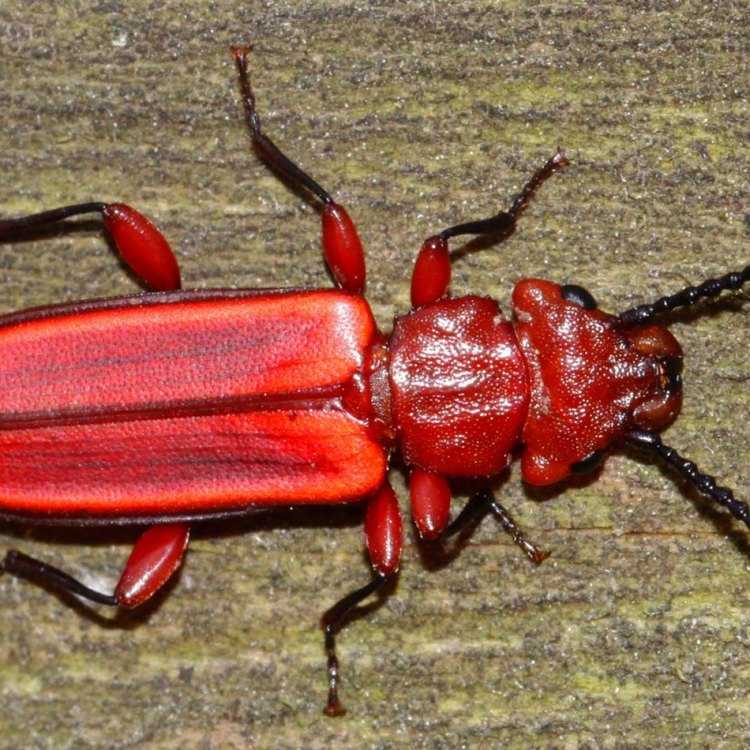
Bark Beetle
- Adult Size: Small
- Average Lifespan: Varies depending on species
- Reproduction: Through eggs
- Reproductive Behavior: Varies depending on species
- Sound or Call: No sound production
- Migration Pattern: Varies depending on species
- Social Groups: Solitary
- Behavior: Burrow into bark
- Threats: Climate change, deforestation, disease
- Conservation Status: Varies depending on species
- Impact on Ecosystem: Can harm trees, affecting forest ecosystems
- Human Use: Some species are used in biological control
- Distinctive Features: Hard and flattened body
- Interesting Facts: Can cause significant damage to forests
- Predator: Birds and other insects
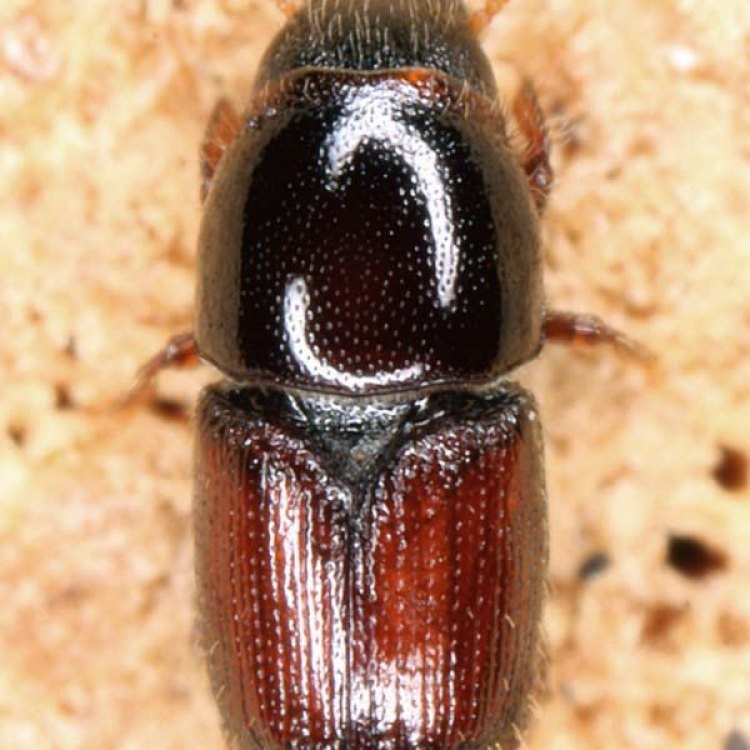
Bark Beetle
The Mighty Bark Beetle: A Small but Destructive Insect
In the midst of a lush forest, an unassuming creature the size of a grain of rice goes about its daily routine. This creature may not catch your eye at first glance, but it holds a significant impact on the ecosystem it inhabits. Meet the bark beetle, a tiny yet mighty insect with the ability to cause significant damage to forests.Bark beetles belong to the Scolytidae family, with over 200 species found worldwide PeaceOfAnimals.Com. They are typically small, with an adult size ranging from 2 to 7 millimeters, and vary in color from black to reddish-brown. These insects have a hard and flattened body, making it easier for them to burrow into the bark of trees. But don't let their size fool you, bark beetles have a complex life cycle and fascinating behaviors that make them a crucial part of forests.
One of the most distinctive features of the bark beetle is its breeding process. Despite their small size, these insects have a unique way of reproducing. Bark beetles lay their eggs inside trees, which then hatch into larvae that feed on the tree's inner bark. As they grow, the larvae create elaborate tunnels, which are also known as galleries, to move around and feed on the tree's nutrients. Once they reach maturity, they emerge as adults, leaving small holes on the tree's bark as a sign of their presence. This reproductive behavior varies from species to species, with some remaining in the same tree while others migrate to new ones Barylambda.
These insects are also solitary creatures, preferring to live and breed alone. However, some species do have a social aspect, with adults helping the larvae to create galleries and share food resources. This behavior is quite rare in insect populations, making bark beetles even more interesting and unique.
Unlike other insects, bark beetles do not produce any sounds or calls. Instead, they communicate through chemical signals known as pheromones. These pheromones help them attract potential mates and also signal the presence of predators or competitors. Scientists have even utilized these pheromones to create traps for managing bark beetle populations.
As for their migration patterns, these vary greatly depending on the species. Some species remain in the same tree for their entire lifespan, while others migrate to new trees or locations, often carrying diseases with them. However, studies have shown that climate change has disrupted the migration patterns of some bark beetle species, as they now move to new and warmer regions.
While bark beetles may seem relatively harmless, their behavior and environmental changes have caused them to become a major threat to trees. Climate change, deforestation, and disease are the primary factors contributing to the increase in bark beetle populations. As temperatures and droughts become more severe due to climate change, trees become weaker and more susceptible to bark beetle infestations. Similarly, deforestation and the removal of trees also make it easier for bark beetles to move on to new locations and cause more damage.
If left unchecked, bark beetle infestations can have devastating effects on forests and the ecosystems they support. These insects attack both young and mature trees, causing significant damage by cutting off the tree's water and nutrient supply. This not only affects the trees but also disrupts the balance of the entire ecosystem. As trees die, it can lead to changes in water cycles, soil composition, and even impact the food sources of other animals that depend on those trees.
Due to their destructive nature, bark beetles have been classified as pests, and several methods have been used to control their populations. One of the most common methods is the application of insecticides, which can be effective but may also have adverse effects on other beneficial insects and the environment as a whole. In recent years, scientists have been exploring more sustainable methods, such as biological control. Some species of bark beetles have been used in biological control programs, where they are introduced into forests to target and control specific wood-boring insects that can harm trees.
Despite their negative impact, bark beetles also have some positive aspects. Some cultures have used them for medicinal purposes, while others use them as a food source. In India, a traditional medicine known as "kandarak" is made from dried bark beetle larvae and is used to treat gastrointestinal illnesses. In parts of Africa, bark beetles are consumed as a popular protein-rich snack. Moreover, some species of bark beetles are an essential part of the ecosystem as they help break down decaying trees and recycle nutrients.
In terms of conservation status, bark beetles vary greatly depending on the species. Some are listed as vulnerable or endangered due to habitat loss and overexploitation, while others are considered of least concern. The conservation efforts for these insects are mainly focused on maintaining the diversity of forests and protecting trees from environmental stressors that can increase their susceptibility to bark beetle infestations.
In conclusion, the bark beetle may be small, but it holds a significant impact on our forests. Its reproductive behavior, migration patterns, and distinctive features make it a unique and fascinating creature. However, its destructive nature also highlights the importance of maintaining a balance in our ecosystems. As humans, it is our responsibility to take care of our environment and take action to protect it from threats such as climate change and deforestation. By doing so, we can preserve the delicate balance of nature and ensure a harmonious coexistence with all creatures, including the mighty bark beetle.
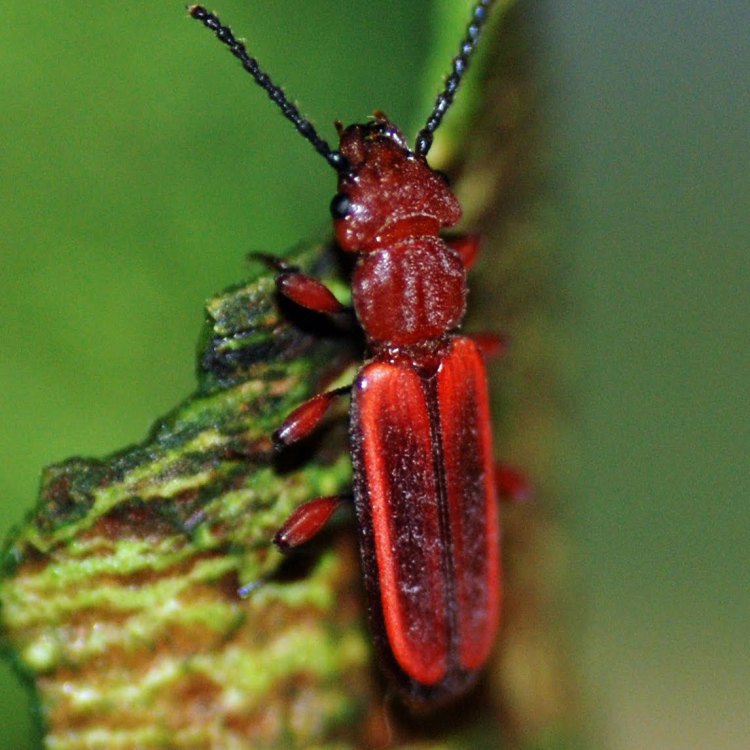
The Fascinating World of Bark Beetles
Disclaimer: The content provided is for informational purposes only. We cannot guarantee the accuracy of the information on this page 100%. All information provided here may change without prior notice.

